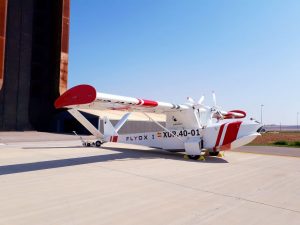Top 4 observations from TIACA’s Air Cargo Forum
Large-scale drone pilot set for 2019

In the last couple of months, he said, a Spanish company called Singular Aircraft has completed three successful test flights of the 11.5-meter-long Flyox I drone (pictured) at a NATO airbase in Norway. The vehicle, with a maximum payload of 2 tonnes and a 14-meter wingspan, made autonomous takeoffs and landings on a runway of fewer than 500 meters, in both day and night test flights. The fixed-wing, twin-engined aircraft flew for a total of 260 kilometers, “with no technical issues and no crashes,” he added.
Gadhia said Astral is now planning to run a pilot project with the amphibious Flyox I in Kenya in 2019, after which it is expected to operate commercially – news that sent a ripple of murmurs through the crowd.
Astral’s emphasis has been to develop large cargo drones – roughly the size of Caravans or single-engine Cessnas – which Gadhia said are more cost-effective than quadcopters and provides flexibility, because many can land on short runways (or none) and some can land on water. In July of this year, Astral purchased two medium-sized Lucas-F250 drones made by Falcon Drones Technology, with a range of 1,500 kilometers and a payload capacity of 250 kilograms.
While there were few details about the planned pilot project or the carrier, Gadhia’s news was one of the more ambitious statements about drones in a field that has grown impatient and often feels chained to the ground by overly cautious regulations.




